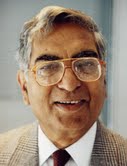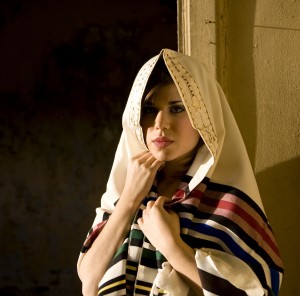Interfaith Recognition
 |
| Dr. Teja Singh |
The citation read: Since Dr. Singh's retirement from a career in forest hydrology, his community service has contributed to goodwill and understanding among diverse faith communities, and helped protect the human rights of new Canadians. As founding president of the Guru Nanak Healing Garden at the Mazankowski Heart Centre, Dr. Singh led his community to raise over two million dollars. He also was the founding director of the Guru Nanak Shrine Fellowship to support a global effort to restore the shrine built around 1521 by the founder of Sikhism. Dr. Singh is on the boards of the Edmonton Interfaith Centre and North American Interfaith Network. He established a NAIN youth scholarship.
Dr. Teja Singh, Director, Edmonton Interfaith Centre, Canada, had this to say on the occasion:
Interfaith understanding and harmony work was started by Guru Nanak more than five centuries ago. Our young adults are the ones to carry the great tradition now.
As a Director of NAIN, a scholarship for young adults was established by me three years ago to encourage such participation. Kindly inform the young adults to apply and join me at their annual function in Salt Lake City during July this year. Peace Poster, with scriptural Quotes from twelve faiths, has been completed and released last week.
Let us take this opportunity to consider and delve into what constitutes Interfaith and inter-religious dialogue by considering what ceratin world bodies/organisation had to say on the subject.
 |
Resolutions adopted by the UN General Assembly(1)
60/10. Promotion of inter-religious dialogue and cooperation for peace
Recalling also the 2005 World Summit Outcome of 16 September 2005,in which the Heads of State and Government reaffirmed the value of the dialogue on interfaith cooperation and committed themselves to taking action to promote a culture of peace and dialogue at the local, national, regional and international levels.
Affirming the need for all States to continue international efforts to enhance dialogue and broaden understanding among civilizations, in an effort to prevent the indiscriminate targeting of different religions and cultures
Underlining the importance of promoting understanding, tolerance and friendship among human beings in all their diversity of religion, belief, culture and language, and recalling that all States have pledged themselves under the Charter to promote and encourage universal respect for and observance of human rights and fundamental freedoms for all without distinction as to race, sex, language or religion
Interfaith
excerpted from: Wikipedia
Symbols of faith(2)
The terms interfaith or interfaith dialogue refer to cooperative and positive interaction between people of different religious traditions (i.e., "faiths") and spiritual or humanistic beliefs, at both the individual and institutional level with the aim of deriving a common ground in belief through a concentration on similarities between faiths, understanding of values, and commitment to the world.
It is distinct from syncretism or alternative religion, in that dialogue often involves promoting understanding between different religions to increase acceptance of others, rather than to synthesize new beliefs. There is a view that the history of religion shows conflict has been more the state of affairs than dialogue.
Throughout the world there are local, regional and international interfaith initiatives; many are formally or informally linked and constitute larger networks or federations. The often quoted "There will be no peace among the nations without peace among the religions. There will be no peace among the religions without dialogue among the religions" was formulated by Dr Hans Küng, a Professor of Ecumenical Theology and President of the Foundation for a Global Ethic.
The term interreligious relations refers to relationships between religions (rel. comparative religion).
Hindu-Christian Interfaith Dialogue: A Few Glimpses(3)
Dr. Shantilal K. Somaiya
India is the birthplace of many faiths and has accommodated and nourished multiple religions. She has provided a common roof to major world religions for their sustenance and growth. The intricate mosaic of diverse faiths, beliefs, traditions and languages in India is indeed amazing.
India cherishes the values of non-violence, detachment, frugal living, non-covetousness, love and compassion to all living beings. Veneration of elders, hospitality, simplicity and peaceful coexistence are some of the commendable features of Indian Culture.
The plurality of faiths in India has made her receptive towards all religions. By and large Indians are not only religious by their nature but they also freely partake of the practices of all religions and thus manifest in their daily lives, unity in diversity.
...Let the world be a single nest because all religions are meant to lead us to the Ultimate Reality. This Ultimate Reality may be pursued differently by different people. The Vedic seers said, ekam sat vipráç bahudhá vadanti / “Truth is one, the wise speak about it in different ways”
The Importance of Interfaith Dialogue: A Buddhist perspective
 In his published work, Crossing the Threshold of Hope, His Holiness, Pope John Paul II, made some observations with which I, as a Buddhist, wholly agree. The Holy Father reminded us all, that "what unites us is much greater than what separates us ... It is necessary ... to rid ourselves of stereotypes, of old habits and above all, it is necessary to recognize the unity that already exists."
In his published work, Crossing the Threshold of Hope, His Holiness, Pope John Paul II, made some observations with which I, as a Buddhist, wholly agree. The Holy Father reminded us all, that "what unites us is much greater than what separates us ... It is necessary ... to rid ourselves of stereotypes, of old habits and above all, it is necessary to recognize the unity that already exists."
Formal interfaith dialogue, however, does not materialize, fully developed, out of a vacuum. It evolves gradually, in response to the needs and aspirations of the broader community of which its participants are members. The "unity that already exists," of which the Pope speaks, is the life of the community, and a tacit consensus, that "what unites us" is at least as important as "what separates us." On the other hand, this pre-existing "unity" must be recognized, and positive steps taken to build on it. No less encouraging, therefore, is the evidence that what was begun some thirty years ago continues with increasing momentum.
O' Mankind
In the beginning was the Truth
At the end, will be the Truth.
So if you love Truth, come
Let us find out some.
Let us find where the Truth lies.
Do not get caught in falsehood and lies
.God has given us
The ability to think, reason and judge,
Between good and bad, right and wrong,
The freedom of choice,
And the sense of shame.
So seek for the Truth and you will find it.
Choose wisely, and do not fail.
For, at the end only Truth will prevail.
Commission Calls For Education On Religious Diversity(4)
Contributor: Voxy News
The report says, respect for religious diversity could be further enhanced by the development of a national structure for interfaith dialogue, guidelines for managing religious diversity in the workplace, health services and other domains, and the development of educational resources to teach about religious diversity in the school curriculum. The Commission is seeking public comment on the review by 30 April.
The website of the Journal of Inter-Religious Dialogue(5)
 |
In an era of unprecedented religious pluralism, analysis of the intersections and interactions between and within religious traditions and subgroups has brought forth innovative scholarship that at times challenges the notions of identity, belief, and the expressions thereof. In spite of these challenges, it is remarkable how deeply rooted much of this scholarship remains within the traditions of its respective authors. In learning about the ‘other,’ it would seem, scholars and practitioners have gained a keener knowledge of their own beliefs.
The Necessity of Dialogue(6)
The word “dialogue” derives from two roots: “dia” means “through” and “logos” comprises many overlapping semantic fields and signifies, among others, “word” and “meaning.” For us the word dialogue, which is also used in music and literature, is particularly important because of its meaning of “deliberation and conversation between individuals and groups."
In a dialogue, it is as if the meaning flows in separate rivers running beside one another in their own channel. This stream has a dynamic nature; it changes and grows. At times these rivers join together in a reservoir with a communal semantic or a lake of reconciliation.
The aim of a dialogue, in spite of differences of opinion and conviction, is to gain understanding and acceptance. The word "dialogue" is therefore distinct from the word discussion. Those who engage in dialogue do not seek to defeat or silence the other person, nor do they adopt a defensive attitude at the outset. They seek to find out, to learn and to understand collectively.
Dialogue implies being amenable to another person's point of view. It requires that one pay attention and listen to another individual so that the heart and the mind might "open." This mutual acceptance makes it possible to understand each other, learn together, and make a collective contribution. A wise person once stated, this process causes an endless deepening of meaning like two mirrors that reflect each other.
Dialogue is also one of the most effective means in the struggle against negative conditioning, prejudice, and fanaticism.
Certain qualities are essential if a dialogue is to be effective, and these qualities are: sincerity, humility, and epistemic curiosity.
References:
(1) http://www.un-documents.net/a60r10.htm
(2) http://en.wikipedia.org/wiki/Interfaith
(3) http://www.somaiya.edu/third(Interfaith).htm
(4) http://www.voxy.co.nz/national/commission-calls-education-religious-diversity/5/43074
(5) http://irdialogue.org/
(6) http://www.interfaithdialog.org/reading-room/the-necessity-of-dialogue.html

